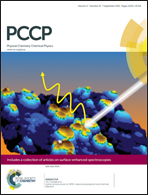Waveguide-coupled directional Raman radiation for surface analysis
Abstract
Kretschmann-type waveguide structures, including Plasmon Waveguide (PW) and Resonant Mirror (RM), have been applied in interfacial Raman spectroscopy due to the following unique features: (1) unlike the classic surface enhanced Raman scattering (SERS) substrates made of either gold or silver, both PW and RM can be prepared using a large variety of inexpensive materials; (2) the field enhancement factors using these structures can be theoretically predicted and experimentally controlled, which enables us to manipulate the surface Raman sensitivity with high repeatability; (3) the use of transverse electric (TE) and transverse magnetic (TM) modes for Raman excitation allows us to evaluate the orientation of target molecules immobilized on the waveguide surface; (4) the unwanted impact of noble metals on the Raman fingerprints of target molecules, which is often observed for conventional SERS substrates, can be avoided upon the use of dielectric waveguides. In this paper, guided-mode-coupled directional Raman emission, which is an additional important feature of the waveguide Raman technique, was theoretically investigated based on the optical reciprocity theorem combined with the Fresnel equations. The simulation results indicate that the directional Raman emission from a dipole located within the field confinement and penetration depth of a guided mode depends on both the orientation of the dipole and its distance from the waveguide surface. Raman light from the TE-oriented dipoles is launched into the prism coupler at the TE-mode resonance angle and that from the non-TE-oriented dipoles propagates at the TM-mode resonance angle. The intensity of the guided-mode-excited Raman signal propagating at the mode resonance angle is proportional to the fourth power of the mode field (E4) at the depth of the dipole from the waveguide surface. This means that the guided-mode-excited and guided-mode-coupled directional Raman spectroscopy has a detection depth that is as small as a quarter of the evanescent-field penetration depth, indicating the excellent surface selectivity of this technique. The directional Raman emission also facilitates high-efficiency signal collection compared with conventional SERS. It is worth noting that Raman light from the dipoles confined in the core layer of a single-mode waveguide can be simultaneously coupled into both the guided mode and the substrate mode, especially the surface plasmon resonance (SPR) mode for PW.

- This article is part of the themed collection: Surface-enhanced spectroscopies

 Please wait while we load your content...
Please wait while we load your content...